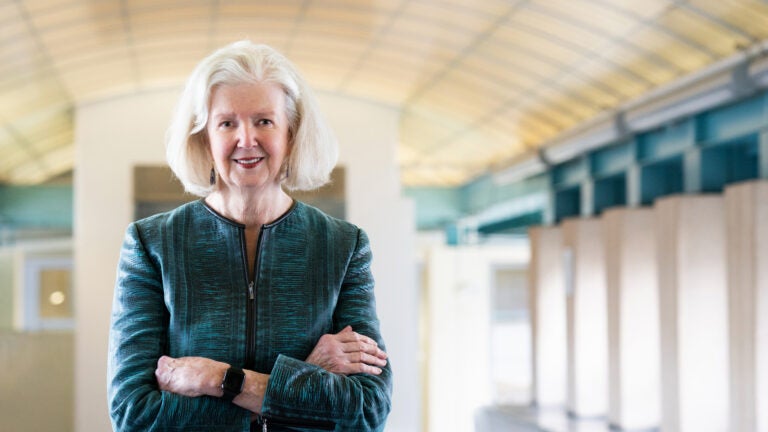
How a trailblazing physician cleared a path for others to follow
TITLE IX: “In my early career, there were just so few of us. I didn’t know that many women doctors,” says Roberta Williams.
When Roberta Williams was in junior high school, her doctors thought she had developed a heart condition and recommended she have surgery. Her parents wanted a second opinion and took her to Johns Hopkins University, where she was evaluated by Helen Taussig, the woman credited with creating the specialty of pediatric cardiology.
Williams noticed a few things on that visit to Taussig’s clinic. The first was the fact that Taussig, a female doctor, was treated respectfully by her colleagues. The other was that she found the equipment used to perform her heart catheterization fascinating.
Two life-changing discoveries came about as a result of that visit. The first was that Williams learned she did not have heart disease and did not need surgery. The second was that she was clear what she was going to do with her life: She was going to be a cardiologist.
“I was focused like a laser,” said Williams, former vice president for pediatrics and academic affairs at Children’s Hospital Los Angeles and a professor of pediatrics at the Keck School of Medicine of USC. As a high school student, she concentrated on science and math courses and even wrote papers on advanced medical subjects such as new techniques in heart surgery.
The art of the pivot
Williams attended college and medical school before Title IX passed in 1972, and there were times when she faced barriers to achieving her goal of becoming a cardiologist. Instead of backing down, she learned to pivot away from schools that did not accept women and instead go to institutions where women were supported.
When she finished high school in North Carolina in 1959, it had been her dream to attend the University of North Carolina at Chapel Hill. Females, however, could not apply for admission to UNC-Chapel Hill as freshmen. Although it was not her first choice, she went to Duke University because it did accept female freshmen.
Williams finished her biology degree at Duke in three and a half years and, still focused on getting into medical school, she got a research position working in the lab of Ernest Craige, who was chief of the division of cardiology at UNC-Chapel Hill. She applied to several medical schools, and at least one asked her why they should give her a spot when she would probably drop out as soon as she got married.
“I just crossed them off my list,” she said with a laugh.
Ultimately, she attended medical school at UNC-Chapel Hill and continued to work for Craige, which included doing research on heart sounds. That research became an important foundation for her career.
She stayed on at UNC-Chapel Hill, where she interned in internal medicine. While there, she met the chair of the pediatrics department at Columbia University. He suggested that she should come to Columbia to do additional training in pediatrics, which she did. In 1969, she went to Boston Children’s Hospital as a fellow, training in pediatric cardiology and later creating the first cardiac ultrasound laboratory, where she spent 12 years on the faculty before heading west.
A boon for medicine
For many years after completing medical school, there were few, if any, women in her department, a far different environment from 2023, when women constitute more than half of all medical students in the U.S. She said she became accustomed to being surrounded by men, who served as mentors, confidants and supporters.
“In my early career, there were just so few of us. I didn’t know that many women doctors,” said Williams, who is now 81.
It was exciting to see women getting together, supporting each other and talking about their shared experiences in medicine.
Roberta Williams, pediatric physician
She was already a senior fellow at Boston Children’s Hospital in 1972 when Title IX passed. Slowly, she started to see more female medical students and more women becoming doctors. And as more women entered the field, she saw growing numbers of them mentoring one another and creating critical support networks.
“It was exciting to see women getting together, supporting each other and talking about their shared experiences in medicine,” said Williams.
The outcome of that landmark decision has transformed medicine, said Williams. It has been documented that increasing the number of women in medicine, and increasing diversity in general, improves the practice of medicine. When people from diverse backgrounds come together to make decisions about treating patients, they come to better solutions.
“It was an important advancement for medicine because of the real partnership between men and women brings a balance and equity that has enhanced patient care,” she said.




